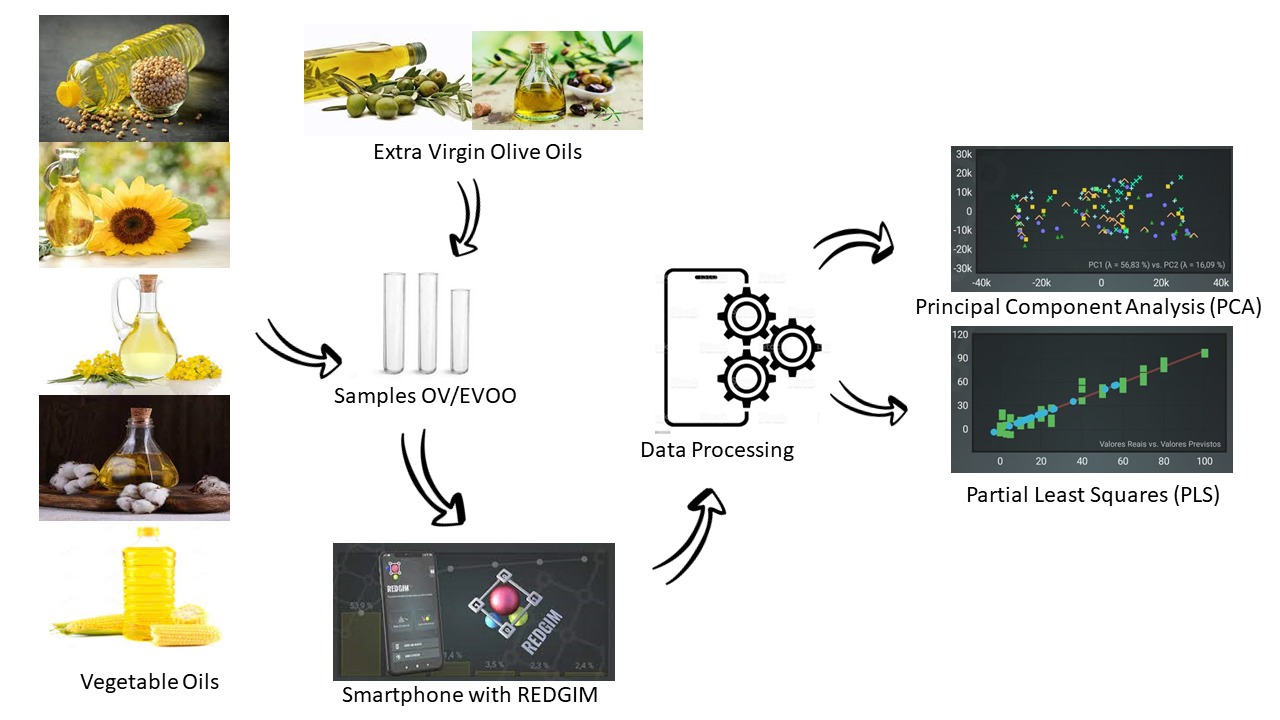USE OF REDGIM TO CHARACTERIZE AND DISTINGUISH DIFFERENT EXTRA VIRGIN OLIVE OILS (EVOOS) ADULTERED WITH DIFFERENT VEGETABLE OILS
Adulterant in EVOOs using REDGIM
DOI:
https://doi.org/10.36524/ric.v9i3.2213Keywords:
Olive, Extra Virgin Olive Oil, Vegetable Oil, Smartphone, REDGIM, in situ analysisAbstract
The application of different software that are capable of analyzing images, more specifically pixels, and discriminating the presence and concentration of different compounds have combined in recent years. REDGIM as an analysis tool is able to assess the presence of adulterants in various foods. Therefore, this work aimed to validate the analysis potential of REDGIM in mixtures of vegetable oils (OVs) in extra virgin olive oils (EVOOs). A smartphone, a portable battery and an LED lamp were used to help during the analysis of the sample sets of EVOO and OV via REDGIM and thus minimize a possible external error such as the variation in the intensity of light in the environment. Samples prepared and maintained via REDGIM had levels of 1/99; 3/97; 5/95; 35/65; 55/45 and 80/20% (OV/EVOO) and these models produced from PCA and PLS by the software itself. The RMSEP values obtained by the fermentation curve for the samples adulterated with soy (2.2% v/v), sunflower (5,4 % v/v), canola (0,3 % v/v), cotton (2,4 % v/v), corn (0,7 % v/v) and blend (2,0 % v/v) met good accuracy in the experience of adulterants in EVOO. The analysis of two Extra Virgin Olive Oils (EVOO) adulterated with vegetable oils (OV) via REDGIM demonstrated that the software for on-site analysis is efficient and brings concrete results, in addition to providing satisfactory information on adulterated samples demonstrating its high applicability in the field.

Downloads
Published
Issue
Section
License
Copyright (c) 2023 Revista Ifes Ciência

This work is licensed under a Creative Commons Attribution-NonCommercial-NoDerivatives 4.0 International License.
Autores que publicam nesta revista concordam com os seguintes termos:
- Autores mantém os direitos autorais e concedem à revista o direito de primeira publicação, com o trabalho simultaneamente licenciado sob a Licença Creative Commons Attribution que permite o compartilhamento do trabalho com reconhecimento da autoria e publicação inicial nesta revista.
b. Autores têm permissão e são estimulados a publicar e distribuir seu trabalho online (ex.: em repositórios institucionais ou na sua página pessoal) a qualquer ponto antes ou durante o processo editorial, já que isso pode gerar alterações produtivas, bem como aumentar o impacto e a citação do trabalho publicado (Veja O Efeito do Acesso Livre).


